These posts are not for foraging. They are intended for entertainment and intellectual satisfaction only. These posts are not a field guide nor comprehensive in any way - their accuracy is not assured in any way. Do not eat wild mushrooms unless you are a professional, have substantial professional assistance or have a wealth of personal experience with a specific species. Do not make any foraging decisions based on these posts. To do so could be dangerous or life threatening.
These Posts Contains No Information Regarding Edibility Or Toxicity
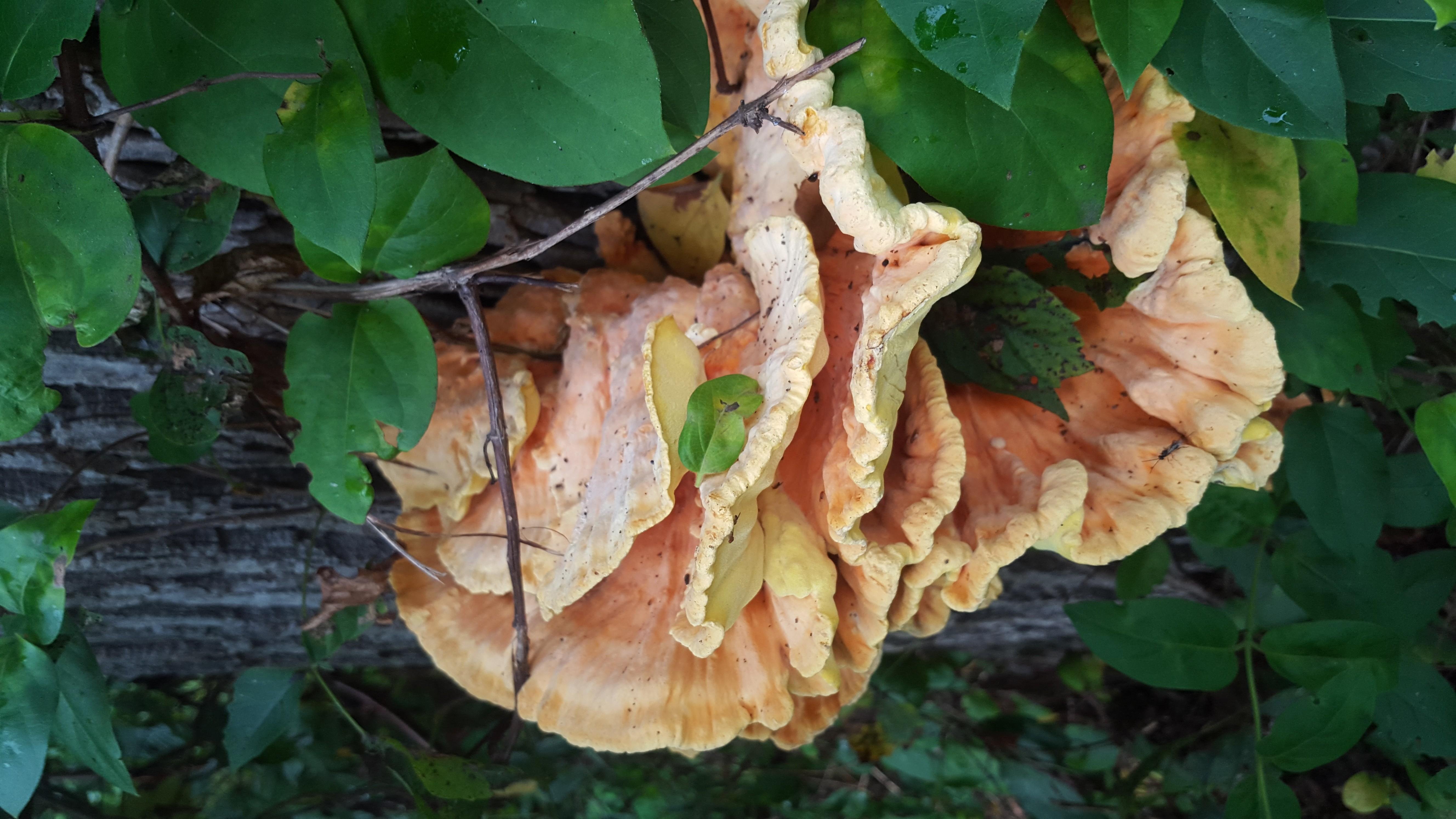
Sometimes you're driving and something strikes you.
Usually it's an idea, or a hitchhiker, or another car. Rarely it's something shiny on the side of the road. If you're me, it's a giant colony of L.sulphureus growing up the side of a half dead tree!
Take a look at these sideways images!
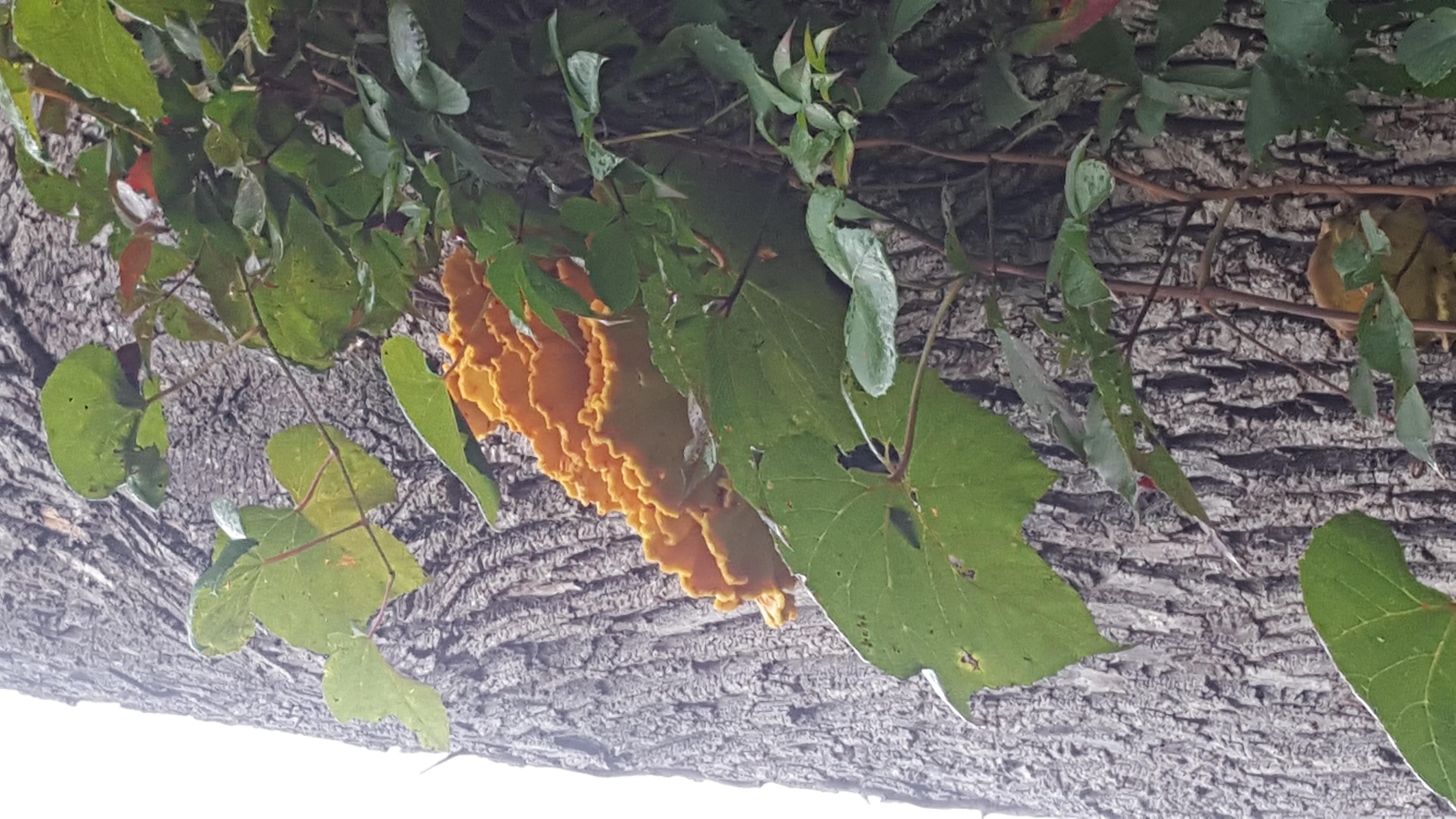
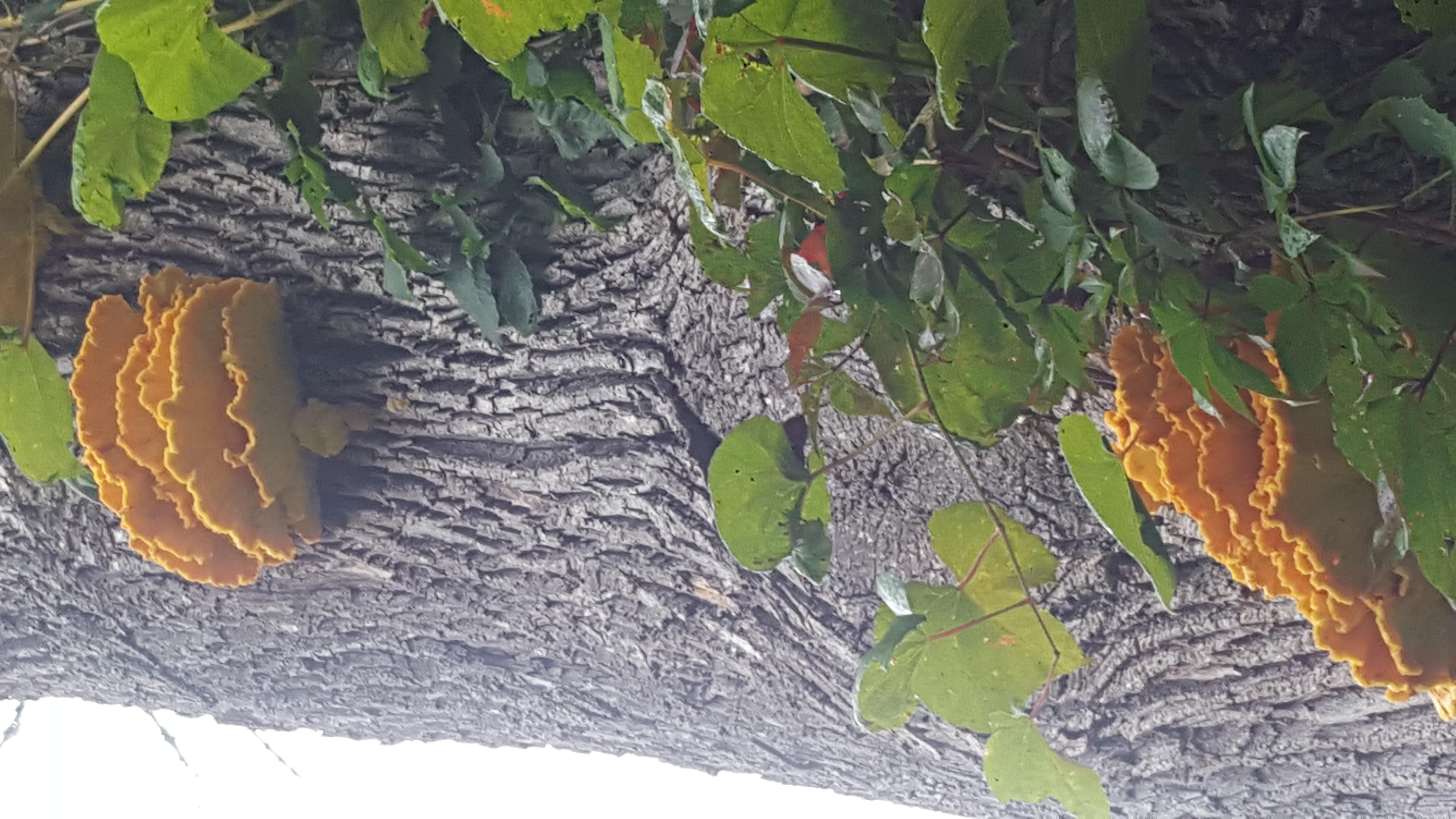
The photos were hard because the mushrooms were three meters up and lots of foliage blocked the view
In fact, the mushrooms were so high up that I almost despaired. The tree was growing right off the side of the road but over a two meter dip as well, so I couldn't climb and even if I could somehow cut a sample it would fall into an inaccessible place. Tarnation!
But, where there is life, there is hope, and the tenacity of the mushroom on this particular dying tree encouraged me to search the entire broad trunk.
That's when I found this beauty hiding right at ground level!
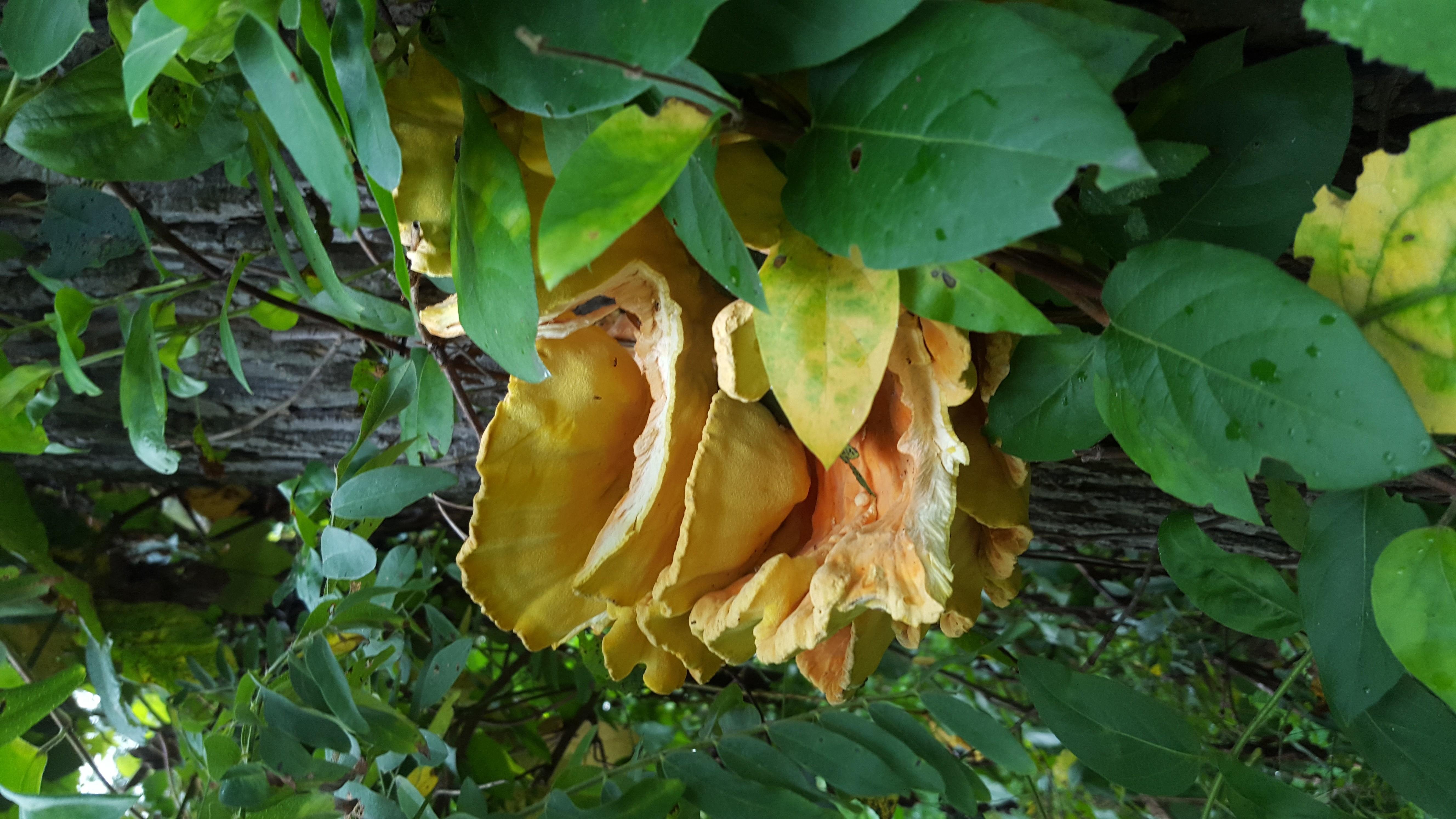
Mother of Mercy
I took a small sample to check the underside.
L.sulphureus pores should be a bright yellow.
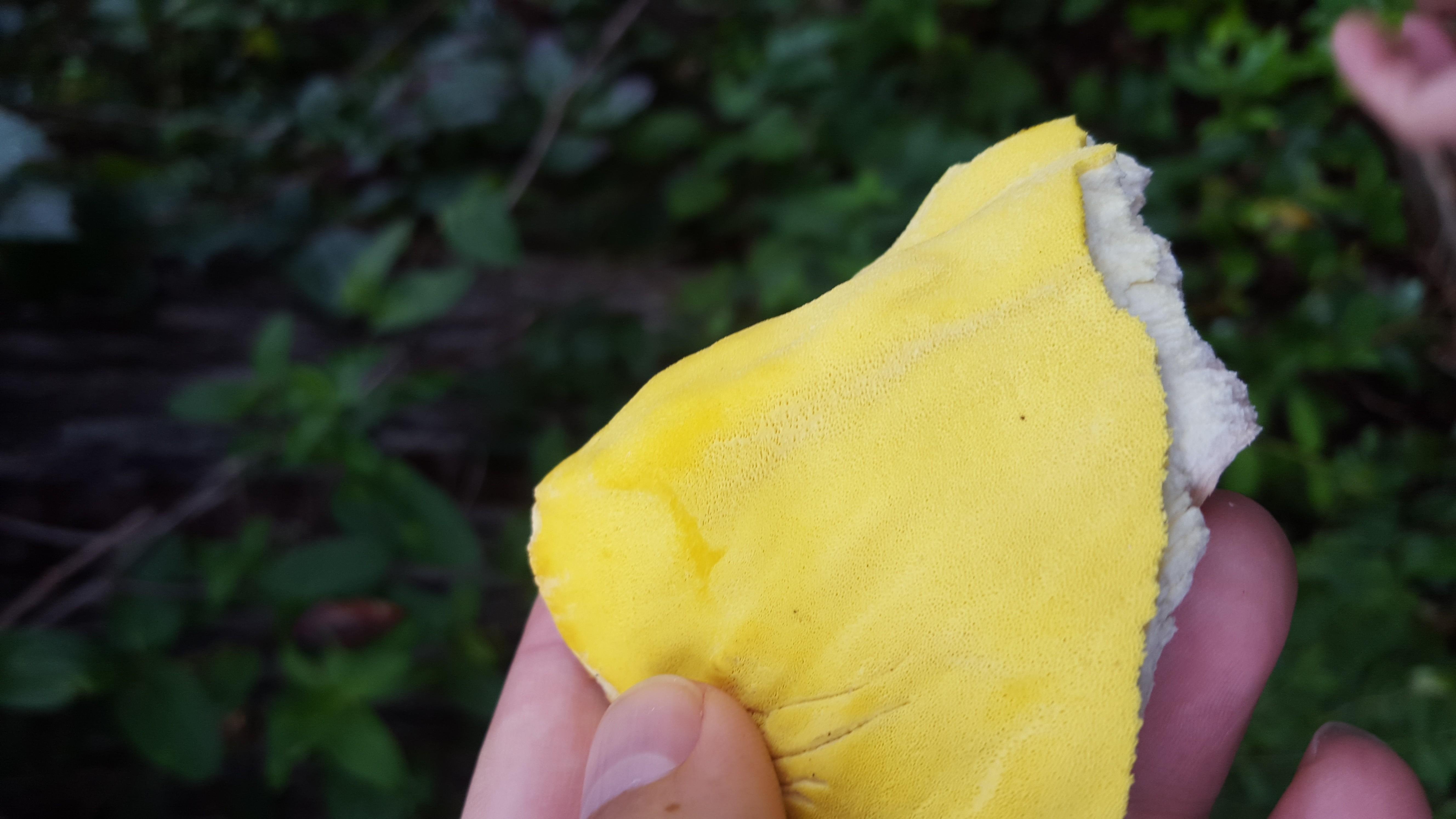
Perfection.
The ends of the caps, up to a couple of inches from the ends, were super fragrant and tender to the touch and we took some pieces with us for spore printing.
Things to note to assist in L.sulphureus ID:
- The densely gregarious shelf structure of the growth
- The location higher up on the tree indicates L.sulphureus as opposed to L.cincinnatus - the latter growing on or near the tree's root system.
- Similarly the yellow pores versus a whiter colored pore also helps distinguish between the two lookalikes.
- Spore print should be whitish. We got a faint print on a black notebook but we were away this weekend and didn't have time to let it fully develop.
Check out my prior post on L. sulphureus for more info in detail - this current post uses the same information I've accumulated over several years - or google Kuo's website for more Info!
All photos OC
